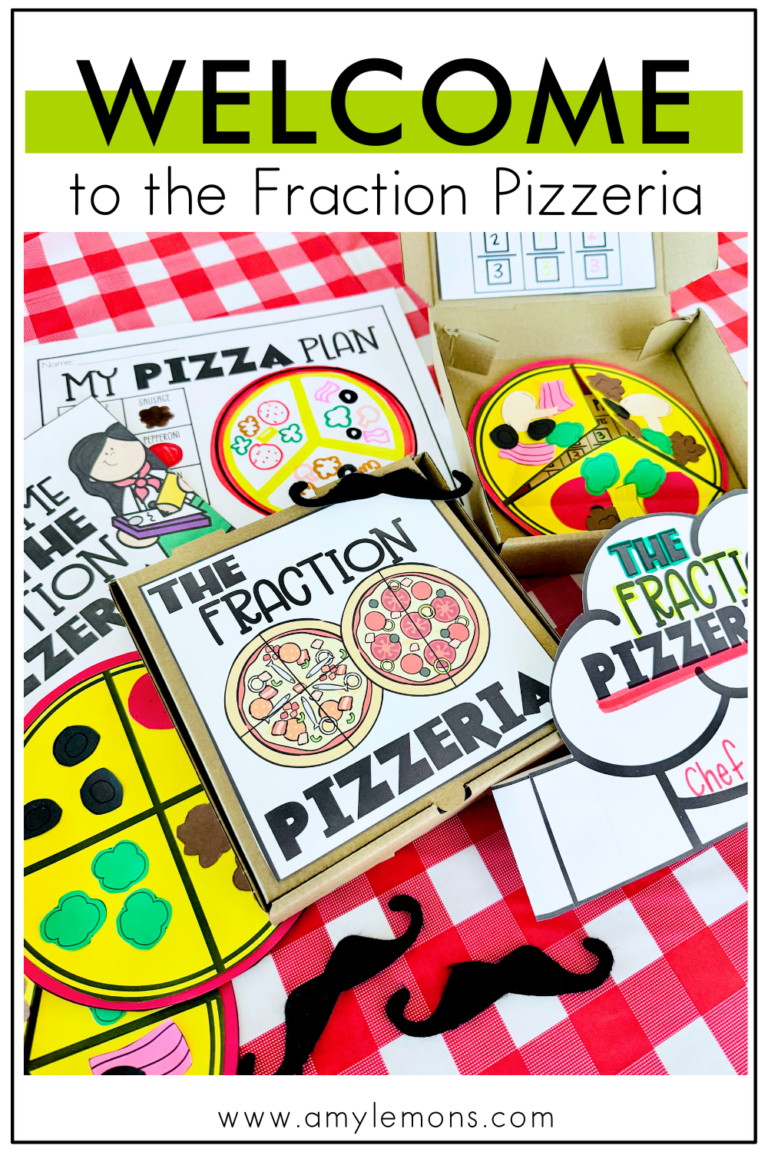

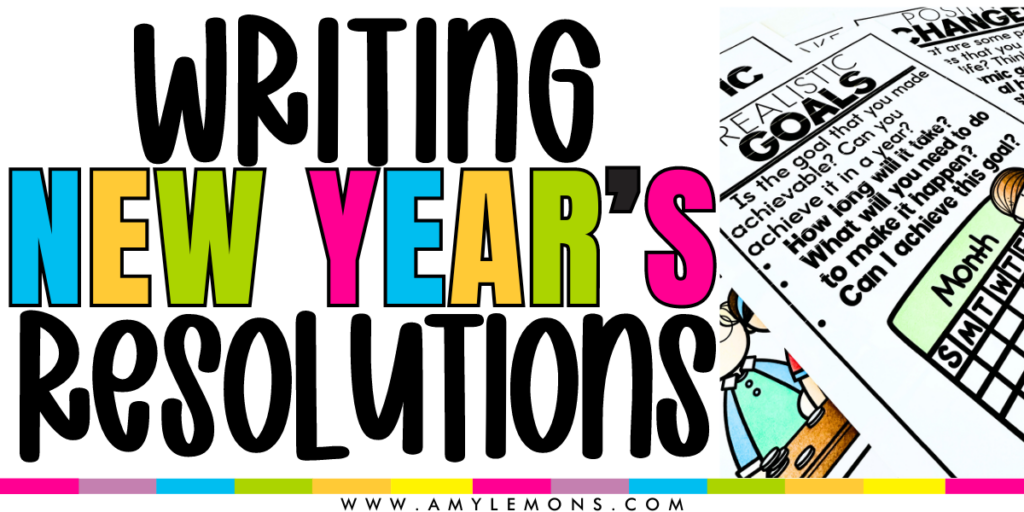
Do you enjoy a fresh start? I love the energy that a new year brings to both my personal and professional life. The new year brings new beginnings, new opportunities, and a chance for revitalization! The excitement that we feel as adults can lead to great teaching moments for children. It is a great opportunity for teachers to engage students in the practice of setting resolutions. Guiding students through this process can foster self-awareness, personal growth, and a sense of accomplishment.
Have you ever asked students to write goals for the new year, and they just have no clue where to begin? I must admit I’ve done that too many times. Often times I just wanted a cute bulletin board for the new year. Rather than just quickly jotting down some meaningless goals, start the conversation about goal-setting with a captivating picture book.
Squirrel’s New Year’s Resolution by Pat Miller is a great springboard for a discussion about resolutions. Reading stories about characters making new goals will help the students make connections to their own lives. It provides the context that they need to understand thoughtful reflection and goal-setting. Plus, you can tie in comprehension skills like identifying the problem and solution to get the most bang for your buck!
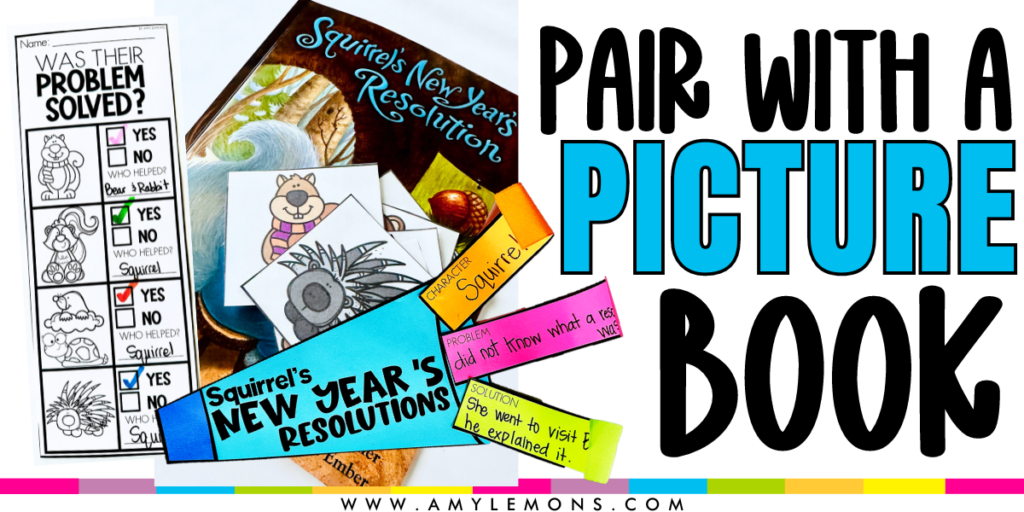
Activities for Squirrel’s New Year’s Resolution
Next, build background knowledge about New Year’s Day. Read information about the holiday and how it is celebrated all over the world. Incorporate information about multiple cultures so that students can explore new customs and traditions! For example, did you know that in Canada many people take part in a Polar Bear Plunge on New Year’s Day? They dip into freezing waters to raise money for charity. Sharing interesting facts about various New Year’s customs from around the world will broaden students’ perspectives.

Informational text titled: All About New Year’s Day
Before diving into resolutions for the upcoming year, guide students in a time of reflection. Have students think about different achievements and areas of growth. These may include school, sports, hobbies, interests, skills, habits, health, etc. Model thinking through the list and choosing an area of focus. Show students how we can reflect on our successes, areas of improvement, and accomplishments before setting new goals. Don’t forget to celebrate successes both big and small! This will build a positive mindset before the creation of new resolutions.

Reflecting on Last Year Writing Activity
Now it’s time to discuss the importance of setting realistic and achievable goals. To set the stage for a more purposeful and effective goal-setting process, break down the following concepts with your students:
Provide examples to help students understand how to create resolutions that will be challenging but also attainable. Here are some examples:
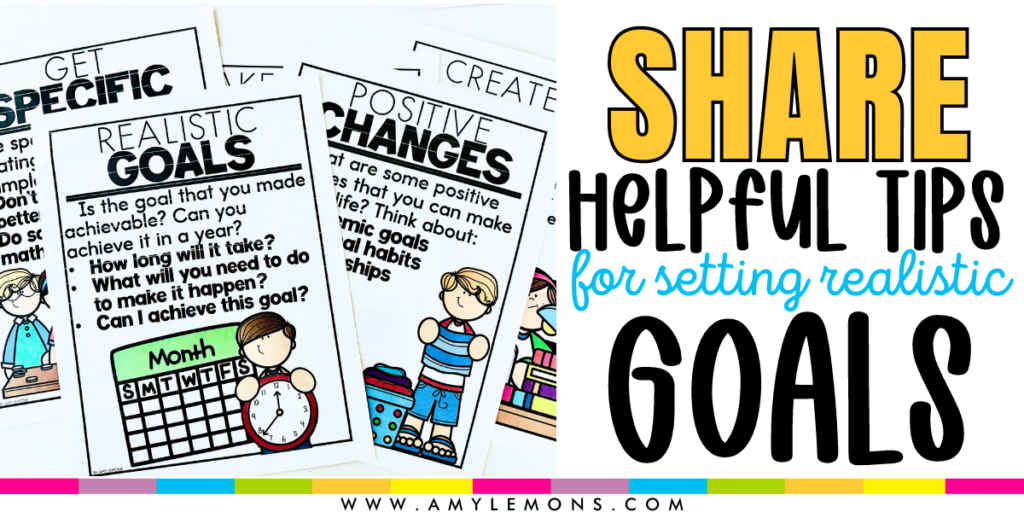
The groundwork has now been set! Students have built their schema. They’ve researched New Year’s Day traditions, read captivating stories, and learned about the process of creating resolutions. It’s time for students to brainstorm ideas for their very own goals. Students will choose an area of focus, such as academic, personal, or social. Once they have identified their resolutions, guide students through the process of writing them down. Using simple and clear outlines will keep students on track as they begin creating their new goals.
Don’t forget to encourage students to include the steps needed to achieve their goals. This will give them a sense of accountability and purpose!
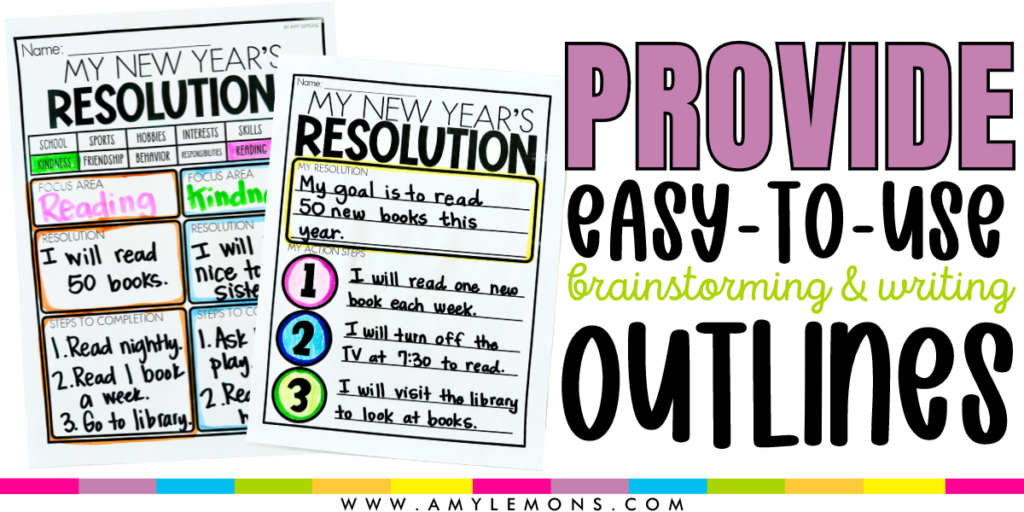
Easy to Use Templates and Outlines for Students
Once students have had a chance to set their goals and write them down, it’s time to finalize the process! Guide students in a directed drawing of themselves on New Year’s Day to display with their writing. The self-portraits and thoughtful resolutions will create a beautiful and meaningful display in your classroom or in the hallway.
Students can also assess their writing with a self-reflection rubric. This will ensure that they not only followed the resolution writing process, but also that they wrote clearly and grammatically correct.

New Year’s Day Directed Drawing, Writing, and Rubric

{Amazon affiliate links were used in this post but these are books I have personally read and enjoyed.}

Hey, y’all! My name is Amy Lemons and I am passionate about providing students with both engaging and effective standards-based Math and ELA lessons.

Sample a day of Rooted in Reading with these lesson plans and activities for Reading Comprehension, Vocabulary, and Grammar!